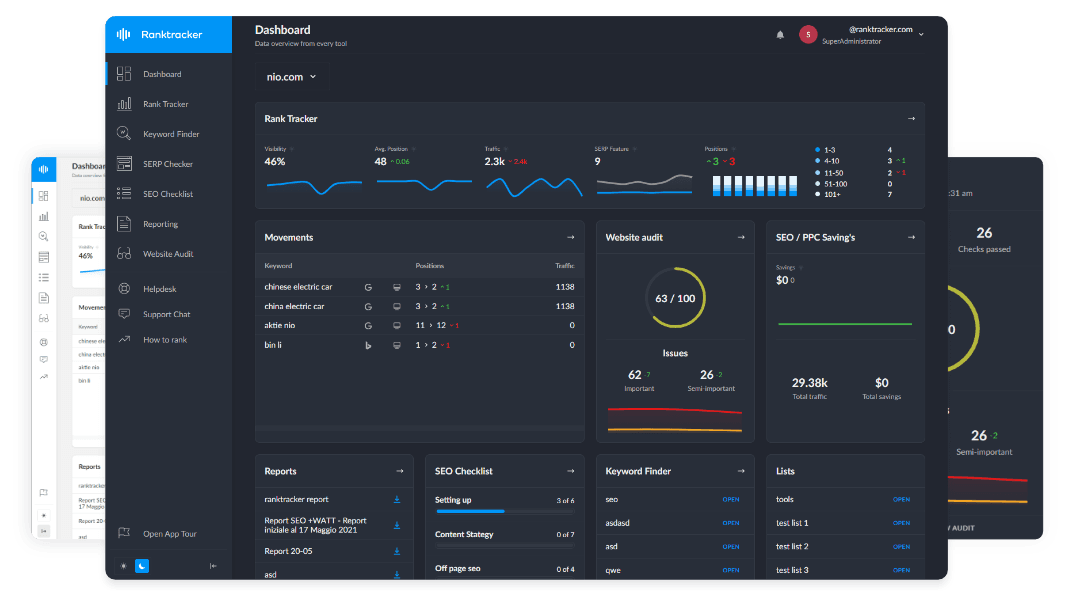Intro
SEO has come a long way from the days of keyword stuffing. Semantic SEO is about understanding the meaning behind search queries and creating content that genuinely helps users. Instead of just targeting keywords, you focus on topics, context, and user intent—exactly what Google’s algorithms prioritize today.
If you want your website to rank higher and stay relevant, mastering Semantic SEO is a must. Let’s break it down into a clear, actionable roadmap.
Step 1: Get Inside the Mind of Your Searchers
What’s Search Intent, and Why Should You Care?
Think about the last time you Googled something. Were you looking for a quick answer, researching options, or ready to buy? That’s search intent in action, and Google tailors results based on what it thinks users want.
There are four main types of search intent:
- Informational – People want to learn something (e.g., “What is Semantic SEO?”)
- Navigational – They’re looking for a specific site (e.g., “Ranktracker blog”)
- Transactional – They’re ready to make a purchase (e.g., “Best SEO tools”)
- Commercial Investigation – They’re comparing options before buying (e.g., “Ranktracker vs. SEMrush”)
What You Can Do:
- Google your target keywords and study the top-ranking pages—what intent do they serve?
- Write content that actually helps—answer questions clearly and comprehensively.
- Check Google’s "People Also Ask" to uncover related queries your audience is searching for.
Step 2: Organize Your Content into Topic Clusters
What Are Topic Clusters?
Instead of creating random, disconnected blog posts, topic clusters help structure your content in a way that’s easy for Google (and your readers) to navigate.
How to Do It Right:
- Start with a pillar page—a comprehensive guide on a broad topic (e.g., "Complete Guide to Semantic SEO").
- Create supporting articles that cover subtopics (e.g., "How LSI Keywords Improve SEO").
- Link everything together—internal linking helps Google understand relationships between pages.
Step 3: Optimize for Entities and Context, Not Just Keywords
What Are Entities in SEO?
Google is moving beyond individual keywords and looking at entities—things like people, places, brands, and concepts.
How to Optimize for Entities:
- Use structured data (Schema Markup) so search engines can better understand your content.
- Naturally include related keywords and synonyms instead of repeating the same phrase over and over.
- Reference authoritative sources like Wikipedia or Google Knowledge Graph to build credibility.
Step 4: Write Content That’s Easy to Read and Understand
How to Make Your Content More Engaging:
- Write for people first, search engines second. Avoid robotic-sounding text.
- Use a conversational tone—pretend you’re explaining it to a friend.
- Answer questions upfront—Google loves content that gets straight to the point.
- Structure it well—use bullet points, subheadings, and bold text to break things up.
Step 5: Master the Art of Internal and External Linking
Internal Linking:
- Link to related content to guide readers to more useful information.
- Use descriptive anchor text that tells readers (and search engines) what to expect.
External Linking:
- Link to trusted sources to add credibility to your content.
- Cite studies, official websites, and industry experts.
Step 6: Track Your Progress and Adjust as Needed
Tools to Measure Success:
- Google Search Console – See how your content ranks and which queries drive traffic.
- Ranktracker's Keyword Finder & SERP Checker – Discover new keyword opportunities and track rankings.
- Google Analytics – Monitor engagement metrics like bounce rate and session duration.
Key Metrics to Watch:
- How well you rank for semantic keyword variations
- If your content appears in featured snippets
- Growth in organic traffic and search visibility
Final Thoughts: Keep Improving Your Semantic SEO Strategy
SEO isn’t a one-time fix—it’s an ongoing process. By focusing on search intent, topic relevance, and structured content, you’ll stay ahead of algorithm updates and keep your rankings strong.
Want to supercharge your SEO efforts? Check out Ranktracker’s tools to get real-time insights and optimize your strategy for long-term success.

